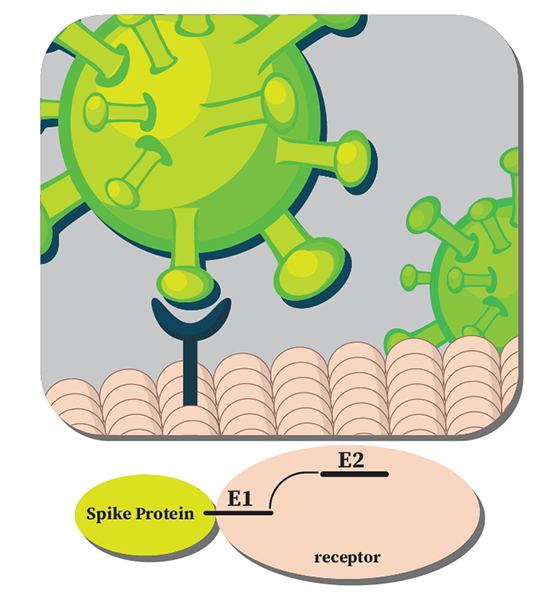Research on COVID-19 at a Quantum Level to be Presented to the American Physical Society
At a significant annual international meeting of more than 10 000 physicists in Chicago in the United States in March, research from The University of KwaZulu-Natal’s (UKZN) Centre for Quantum Technology will be presented to the American Physical Society (APS) concerning the role played by the phenomenon of quantum tunnelling in infection with SARS-CoV-2.
This important research reveals what is happening on the minutest scale when viruses infect their hosts and could inform research into new therapies to treat disease and post-viral syndromes and relieve the burden of these on health systems.
Researchers in quantum biology have had some success in describing biological processes including photosynthesis, enzyme catalysis, magnetoreception and olfaction (the sense of smell) – at the heart of many of these processes is the phenomenon of electron transfer, which is facilitated by the biological environment.
Professor Francesco Petruccione, Professor Ilya Sinayskiy and PhD candidate Ms Betony Adams from UKZN, and Professor Rienk van Grondelle from Vrije Universiteit Amsterdam in the Netherlands authored the study after being intrigued by the parallels between research in quantum biology and some mechanisms of SARS-CoV-2 infection, specifically the involvement of enzymes, the disruption of olfaction and the use of drugs that target specific receptors.
In the context of the urgent drive to generate more knowledge about how exactly viruses find purchase in their hosts with the SARS-CoV-2 pandemic raging, this research examines how electron transfer might activate cellular receptors.
Quantum tunnelling describes the movement of particles through barriers that appear impenetrable; it is thought to play a role in many biological processes and possibly in the transfer of particles in the cells responsible for our sense of smell and even in cells in the body’s nervous system.
As the SARS-CoV-2 virus enters the body, it is understood to use enzymes to invade cells – enzymes make use of the lock-and-key mechanism to bind to a substrate. However, quantum tunnelling has been suggested to also be involved in the action of enzymes.
Taking this knowledge, in combination with observations that COVID-19 disease disrupts olfactory receptors leading to a loss of sense of smell, these researchers investigated how quantum tunnelling might play a significant role in enabling infection with SARS-CoV-2.
They developed a simple model to illustrate the mode of a viral spike protein’s vibrational and electronic (vibronic) interactions and the likelihood that there would be a transfer of charge between it and a receptor cell in the body in the first step of virus-host invasion, suggesting that the vibronic mode of the spike protein, such as those found on the SARS-CoV-2 and other viruses, enhances electron transfer. This work could lead to new therapies to treat such viruses being identified based on their unique vibrational spectra.
Petruccione, the South African Research Chair for Quantum Information Processing and Communication (QIPC), founder of UKZN’s Centre for Quantum Technology and interim Director of the National Institute for Theoretical and Computational Science (NITheCS) will present this research at the APS March meeting.
(The full study—Bad vibrations: Quantum tunnelling in the context of SARS-CoV-2 infection by Adams et al—is available as an e-print at https://arxiv.org/abs/2111.10259)
Provided by University of KwaZulu-Natal.

The SARS-CoV-2 spike protein facilitates host cell invasion by binding with cell membrane embedded ACE2 receptors.
